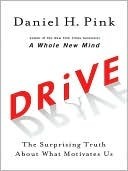More on this book
Community
Kindle Notes & Highlights
Read between
July 28 - July 28, 2020
“The performance of the task,” he said, “provided intrinsic reward.” The monkeys solved the puzzles simply because they found it gratifying to solve puzzles. They enjoyed it. The joy of the task was its own reward.
“When money is used as an external reward for some activity, the subjects lose intrinsic interest for the activity,” he wrote.5 Rewards can deliver a short-term boost—just as a jolt of caffeine can keep you cranking for a few more hours. But the effect wears off—and, worse, can reduce a person’s longer-term motivation to continue the project.
two key factors determined how people fared on the job. The first were “hygiene” factors—extrinsic rewards such as pay, working conditions, and job security. Their absence created dissatisfaction, but their presence didn’t lead to job satisfaction. The second were “motivators”—things like enjoyment of the work itself, genuine achievement, and personal growth.
“that enjoyment-based intrinsic motivation, namely how creative a person feels when working on the project, is the strongest and most pervasive driver.”
Routine work can be outsourced or automated; artistic, empathic, nonroutine work generally cannot.


